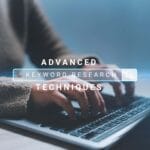Beginners Guide to On-Page Optimization – All You Need to Know
To rank your article on Google, you need to optimize it according to some search engine rules to ensure it comes on top whenever searched. And different search engine optimization techniques include (on-page, off-page, technical, website customization, etc.).
On-page is what makes the article rank, not that off-page is lagging, it plays a key role, but on-page is on the front for Google crawlers, and it is the key to rank. So, on-page optimization is necessary.
On-page SEO refers to the optimization of individual page elements. It refers to the process of optimizing individual web pages using both technical and content SEO strategies.
Content, meta-tags, titles, links, anchor text, and other elements exist. You’ll need a well-thought-out plan to ensure your site is optimized for humans and bots.
On-page SEO aims to create content that directly addresses user queries. It’s complex and involves more than just the content, such as schema and meta tags.
Each page’s content and purpose are completely under your control. You also have complete control over who is allowed to view the page.
When starting to rank your article on Google or any other search engine, page optimization is the first thing you can do with your article, which gives you a head start in understanding the surge in new protocols.
This guide provides you with a thorough understanding of on-page optimization. Let’s dig into it!
What is On-Page Optimization and Why is it Important?
On-page optimization increases your website’s visibility in search engine results pages (SERPs). It significantly impacts your page’s visibility in search results when done correctly. Obtaining a high ranking is becoming more difficult as search engines become smarter and more complex.
To outperform the competition, you must have more than just great content. Optimizing a page’s content and structure can ensure that search engines can easily crawl and index the page, increasing the chances of ranking well in SERPs. Search engine marketing campaigns now cost around $79 billion per year.
If a website owner fails to optimize their pages, the website will not be able to rank well in search engine results pages. A website that is not properly optimized may not be crawled and indexed correctly.
This can lead to poor visibility in search results and low traffic. It is essential to ensure that your website is optimized for search engines.
Several key elements of on-page optimization are important to focus on. These include:
- Keywords – Researching and including relevant keywords in the page title, meta description, and throughout the page’s content.
- Content – Ensuring that the content is well-written, informative, and provides value to the audience.
- Headings and subheadings – Using headings and subheadings to organize the content and make it easy for search engines to understand the main topics of the page.
- Images and videos – Using relevant images and videos to supplement the content and make it more engaging for the audience.
- URLs – Using simple, descriptive URLs that include keywords.
- Internal linking – Using internal linking to connect the pages and help search engines understand the site’s structure.
On-Page vs Off-Page Optimization
SEO’s complexity and rapid evolution make it similar to navigating a terrain. Search engine rankings are improved through on-page and off-page optimization. Title tags, headings, links, and social media shares all impact search engine rankings. To rank well in natural search results, you must understand SEO, from image optimization to link building.
On-page optimization increases website traffic and rankings. To make a website search engine friendly and visible in SERPs, its content and structure must be changed. Keywords, content, headings, subheadings, images, videos, URLs, and internal linking are all part of on-page optimization.
Off-page optimization is the process of optimizing off-site. Links, social media, and reputation management are part of the package. Link building increases the authority and credibility of your website. Website traffic is increased by using social media.
SEO, both on and off the page, improves website visibility and rankings. Off-page optimization assists search engines in understanding and finding a website, thereby increasing its authority and credibility.
Key Elements of On-Page Optimization
On-page SEO (search engine optimization) is more important than ever, so optimize your content. If Google changes its algorithm or a competitor publishes superior content, you risk losing your top spot in search engine results. The following on-page elements heavily influence search engine rankings. We have explained every single one for you below:
Title Tags
Title tags are HTML tags that summarise a web page’s contents. They appear as the first line of a search result on search engine results pages. Search engines use the information in the title tag to understand the page’s content and determine its relevance for a specific search query.
A well-written title tag can increase the chances of a page ranking well in SERPs. An example of a title tag would be:
<title>On-Page Optimization: A Beginner’s Guide</title>
It’s important to note that title tags should be unique for each page and written to accurately describe the page’s content while enticing users to click on the link. It should also contain relevant keywords that users may use to find the page.
Meta Descriptions
The information on a page can be summarized in a single HTML tag called the meta description. It’s the copy that appears beneath your page title in SERPs. While not used for SEO ranking purposes like page titles, meta descriptions effectively get users to click through to a page.
They are typically between 150-160 characters. They are displayed in the search engine results pages (SERPs) below the page’s title, and their purpose is to provide the user with a preview of the page’s content and how it relates to the user’s query.
Meta descriptions are important in on-page optimization because they can influence a page’s click-through rate (CTR). A well-written meta description can entice users to click on the link, improving the page’s visibility and ranking in the SERPs.
A meta description will look like this in the HTML code of a webpage:
<meta name=”description” content=”This is an example of a meta description; it provides a summary of the page’s content.”>
Headings
Headings are used to structuring and organize web page content. They are used to create a hierarchical structure, with the most important heading (H1) coming first, followed by subheadings (H2, H3, etc.).
Headings are an important part of on-page optimization because they assist search engines in understanding a page’s structure and content. They also help users scan and read the content on a page more easily.
The H1 heading is the most important and should be used for the page’s main title or topic. To break up the content and provide additional information, use subheadings (H2, H3, etc.). Headings in HTML are represented by the H1-H6 tags, for example:
<h1>Information about Dogs</h1>
<h2>Breeds of Dogs</h2>
<h3>Labrador</h3>
URLs
A URL (Uniform Resource Locator) is a website’s Internet address. The unique identifier instructs the browser where to find a specific web page or resource.
URLs are essential to on-page optimization because they can affect the user experience and search engine ranking. A well-structured URL is simple to read and understand for both users and search engines, increasing the likelihood that the page will be visited and indexed.
The URL should have a clear and organized structure and keywords relevant to the page’s content. Keep the URL as short as possible and avoid special characters and numbers. It is critical to remember that URLs are case-sensitive, so lowercase letters are preferred.
A URL typically looks like this:
https://www.example.com/category/subcategory/page
Content Organization and Formatting
The structure and presentation of content on a web page are referred to as content organization and formatting. Headings, subheadings, paragraphs, bullet points, images, and videos are all examples of this.
Proper content organization and formatting are important for on-page optimization because they can improve the user experience and make it easier for search engines to understand the content of a page. Here’s an example of good content organization and formatting:
<h1>How to write a blog</h1>
<p>Without a topic, nothing can be done, so start by choosing a niche and start coming up with a topic and then comes the research on it</p>
<h2> How to choose a niche </h2>
<p>Look deep inside your interest and skill set and see what intrigues you. That’s where you will you’re your niche. </p>
<img src=”Image-blog.jpg” alt=” How to write a blog”>
As you can see in the example, the headings and subheadings are used to structure the content and make it easy to scan, the text is broken into short paragraphs, the keywords “blog” is in the main heading, and an image is used to enhance the user experience.
Images and Alt Text
Images and alt text are critical components of on-page optimization because they improve user experience and assist search engines in understanding the page’s content. Alt text (alternative text) is used to provide a text description of an image for users who are blind or whose browser is unable to load the image.
The alt text describes how an image appears or functions on a website. For visually impaired users, screen readers read aloud alt text. To improve their rankings, make sure your images are search engine optimized.
If image search is an important part of your SEO strategy, then providing Google with accurate information about your images effectively conveys topic relevance. Properly using images and alt text includes:
- Using relevant images that add value to the content.
- Adding descriptive and relevant alt text to each image, including keywords when appropriate
- Compressing images to reduce load times.
<img src=”Image-blog.jpg” alt=” How to write a blog”>
Using alt text on a page will help search engines understand the images on your website, allowing them to rank your pages appropriately. It’s important to remember that because search engines can’t see images, they rely on alt text to understand the image’s content and context.
The alt text “A close-up of a golden retriever puppy playing with a ball” describes the image for users who cannot see it.
9 Tips for Effective On-Page Optimization
If you have read the guide, you now have a thoughtful understanding of on-page optimization. We are now advancing into more effective on-page elements that will give us the most do-you-have written content. Here are nine tips for your effective on-page optimization.
1. Use Keywords Naturally and Sparingly
Keyword optimization is an important component of on-page optimization, but it must be done naturally and sparingly. This refers to using natural keywords that do not appear forced or stuffed.
Use keywords in the title, meta description, headings, and throughout the content, but make sure they sound natural and are not overused. Maintain an acceptable keyword density, usually between 1-3%. Do not sacrifice content quality to use keywords.
Use keywords naturally and sparingly to create high-quality, relevant, and search engine-friendly content. For instance, if you’re writing a blog post about “how to train a Golden Retriever,” you might include the terms “golden retriever” and “dog training” as keywords.
Users and search engines may perceive your content as spammy if you use keywords unnaturally. If you stuff keywords into your website, search engines may penalize you and lower your ranking.
2. Keep Titles and Meta Descriptions Concise and Compelling
Titles and meta descriptions are critical components of on-page optimization because they are often the first thing users see when conducting an online search. They should be brief and persuasive to pique the user’s interest and entice them to click the link.
Keep titles and meta descriptions brief and engaging by keeping them between 50 and 60 characters long, as this is the standard limit for search engine results pages (SERPs). Use keywords in the title, but make sure they sound natural and aren’t stuffed or forced.
Make sure the title accurately describes the content of the page. You can increase your pages’ click-through rate (CTR) and their visibility in search engine results from pages by keeping titles and meta descriptions short and engaging (SERPs).
Users may be discouraged from clicking the link if you disregard this recommendation and use lengthy and uninteresting titles and Meta descriptions. Furthermore, it may cause visitors to perceive your website as less credible and professional.
For example, a good title and meta description for a blog post about “how to train a golden retriever” might be:
Title: “Effective Tips for Training Your Golden Retriever Puppy”
Meta Description: “Learn how to train your golden retriever puppy with these practical obedience and behavior training tips. Get started today!”
3. Use Headings to Create a Clear Hierarchy and Structure for the Content
On-page optimization necessitates the use of headings to organize content. It makes it easier to scan and read page content. It also assists search engines in understanding the structure and content of a page, which can improve its ranking in SERPs.
Headings separate content and create a hierarchy. H1 headings should be used for page titles and topics. Headings should accurately describe the content. Keywords should be included in headings, but they should not sound forced. Headings help to organize the content of a website.
Users and search engines may find your content difficult to read if you don’t use headings, which can harm your rankings and user experience. It also gives your website an unprofessional and disorganized appearance.
4. Use Descriptive, Keyword-Rich URLs
On-page optimization necessitates descriptive, keyword-rich URLs to help users understand and remember the page’s content. It also assists search engines in understanding the structure and content of a page, which can improve its ranking in SERPs.
Use descriptive URLs that do not contain any special characters or numbers. Instead of underscores, use hyphens to separate URL words. Keywords in URLs should be natural sounding. Consistent URLs should be used for product, category, and blog post pages.
For example, a good URL for a blog post about “how to train a golden retriever” might be:
https://www.example.com/train-golden-retriever-puppy
If you use a non-descriptive and non-keyword-rich URL, users and search engines may struggle to understand the page’s content. This could harm user experience and SEO.
5. Use Subheadings, Bullet Points, and Short Paragraphs to Make the Content Easy to Read and Scan
On-page optimization entails making content easier to read by using subheadings, bullet points, and short paragraphs. It makes it easier to scan and read page content. It also assists search engines in understanding the structure and content of a page, which can improve its ranking in SERPs.
Use keywords in subheadings, bullet points, and short paragraphs to make content scannable. Short paragraphs of three to four sentences should sound natural rather than forced. Bullet points make it easy to scan important information.
For example, a good use of subheadings, bullet points, and short paragraphs in a blog post about “how to train a golden retriever” might be:
h2>Effective Tips for Training Your Golden Retriever Puppy</h2>
<p>Training a golden retriever is a rewarding experience. It’s important to start training your puppy early on, focusing on obedience and good behavior. Here are some effective tips to help you get started:</p>
<ul>
<li>Start training your puppy as soon as you bring them home.</li>
<li>Be consistent with training sessions.</li>
<li>Use positive reinforcement techniques like treats and praise.</
6. Optimize Images by Using Relevant File Names and Alt Text
On-page optimization includes providing relevant file names and alt text for images to help users understand and scan the page’s content. It also assists search engines in understanding the structure and content of a page, which can improve its ranking in SERPs.
To optimize images, use descriptive file names and alt text. In alt text, keywords should sound natural. Users and search engines may have difficulty understanding your website if it has irrelevant or non-descriptive file names and text.
For example, a good use of relevant file names and alt text for an image of a golden retriever puppy playing with a ball might be:
<img src=”golden-retriever-puppy-playing-with-ball.jpg” alt=”A golden retriever puppy happily playing with a ball”>
This can have a negative impact on user experience and SEO. The filename “Golden-retriever-puppy-playing-with-ball.jpg” is descriptive, while the alt text “A golden retriever puppy happily playing with a ball” is concise.
7. Produce Unique, Useful Content
On-page optimization necessitates unique, useful content to assist users in understanding and appreciating the page. It also assists search engines in understanding the structure and content of a page, which can improve its ranking in SERPs.
Investigate your topic and contribute something new to the conversation. Naturally, use keywords. Images and videos enhance the engagement of content. Users and search engines can be confused by duplicate or low-quality content.
This can have a negative impact on user experience and SEO. Search engines may penalize websites with duplicate content. This article provides novel golden retriever training advice. It provides numerous golden retriever puppy training tips.
8. Regularly Crawl and Audit Your Website
Crawling and auditing your website are important aspects of on-page optimization. It assists you in identifying and resolving any technical issues that may impede your website’s performance. It also allows you to track the changes and updates made to your website, which can improve its visibility and ranking.
Use web crawling tools like Google Search Console to regularly check for broken links and duplicate content. Use website auditing tools to look into issues like speed, mobile compatibility, and user experience. Analyze the website’s analytics data to identify areas for improvement.
If you do not crawl and audit your website regularly, you may miss important technical issues affecting the site’s performance.
Crawling and auditing your website regularly can help you avoid technical issues, improve user experience, and rank higher in search engine results pages.
9. Always Keep Track of Your SEO Analytics
Keeping track of your SEO analytics is critical for on-page optimization because it allows you to understand how your website performs and identify improvement areas. It also allows you to track your progress and evaluate the effectiveness of your SEO efforts.
Track website traffic, bounce rate, and other user engagement metrics with tools like Google Analytics. You can also use Google Search Console to monitor the visibility and ranking of your website in search engine results pages.
Make data-driven decisions using analytics data to identify areas for improvement. You may miss important insights about your website if you do not regularly monitor and analyze its performance. This could result in poor decisions and stagnation of your SEO strategy.
You can improve your site’s performance and chances of ranking higher on search engine results pages by regularly monitoring and analyzing its analytics.
Advanced On-Page Optimization Techniques
Advanced on-page optimization techniques are tools for increasing a website’s visibility and ranking in search engine results pages. These techniques are intended to target specific issues and provide more targeted solutions to improve the performance of your website.
They can aid in improving user experience, increasing website traffic, and improving rankings. The below list explains the advanced on-page optimization techniques.
Internal Linking
Internal linking is the process of connecting two pages on the same website. This improves site navigation and informs search engines about the importance of a page. Internal linking is used in on-page optimization to help search engines understand the structure of a website. The navigation menu of a website contains internal links to important pages.
These links, typically located at the top or side of a page, assist users in locating what they require. Internal linking must be done logically and intuitively.
External Linking
External linking connects one website’s webpage to another. This is done to provide more context to users and to indicate to search engines the quality or relevance of the linked-to website. External links to high-quality, relevant content can increase website traffic.
To be successful, external linking must be relevant, high-quality, and trustworthy. Use descriptive and relevant anchor text to help users and search engines understand links. Many low-quality external links may indicate to search engines that a website is untrustworthy.
Schema Markup
Microdata schema markup can be included in HTML code. It aids search engines in their interpretation of website content. Rich snippets, such as star ratings and prices, can then be shown in search results. Internal linking connects one page of a website to another.
JSON-LD is used in the schema markup (JavaScript Object Notation for Linked Data). It’s invisible code in the head or body of a webpage. Internal linking necessitates a straightforward website structure, descriptive anchor text, and links to pertinent pages.
Mobile Optimization
Websites are optimized for smartphones and tablets through mobile optimization. It assists search engines in understanding the structure and content of websites, which aids in on-page optimization. Mobile optimization can improve search engine rankings as well as conversion rates.
Mobile optimization entails making the layout and design of the website responsive to mobile device screen sizes and resolutions. It also entails optimizing the site’s images, videos, and other multimedia content for mobile viewing.
The performance of mobile websites can have an impact on both user experience and search engine ranking.
On-Page Optimization Mistakes to Avoid
In recent years, organic search engine optimization (SEO) has evolved from a niche industry to a major source of income. A technique that is increasingly being used in digital marketing and content strategy.
Experts predict that the SEO industry will be worth $1.6 billion by 2027, a 50% increase over the previous year. So being an expert, you should avoid these mistakes in your content.
Keyword Stuffing
Simply put, keyword stuffing uses a single focused keyword many times over, along with LSI and secondary keywords, to the point where there is no readability or sense of structure in the content. Keyword stuffing will de-rank the article, and Google will see this as Blackhat SEO practice.
Using the keywords appropriately and installing a plugin on your website to guide you regarding SEO practice will be more beneficial.
Duplicate Content
Duplicate content is the one which is considered plagiarized; if Google has already ranked another website’s content and you are copying it, which is also unethical, and Google will not consider it an original piece.
If your site has a lot of duplicate content, its performance in search engine results will suffer. Make certain that each page contains enough original content. Users will become increasingly frustrated if they cannot find the required information.
Slow Loading Times
Slow loading times can have a negative impact on the user experience, resulting in a high bounce rate and low conversion rates. Sites that load slowly can also negatively affect their search engine rankings. Search engines consider a website’s loading speed when determining its ranking.
By ensuring that their website loads quickly and provides a positive user experience, website owners can increase traffic and revenue while improving their search engine rankings. Website auditing and customization is the best way to ensure the site is loading quickly.
Conclusion
If you have read the guide up to this point and understand the characteristics of an on-page optimization strategy, following this guideline will almost certainly rank your page on Google’s first page.
You only need to ensure that the content you write is well-optimized in terms of keyword placement, internal and external linking, content presentation, and perfect tonality and niche-specificity.
Online Biz Builders have been a part of the revolutionary changes that Google has brought about for content optimization and search engine algorithms. We strive for SEO best practices without compromising the quality of content and take care of file sizes so the website can load faster.
Online Biz Builders have a team of data scientists that optimizes and understands the workings of the Google algorithm and presents a strategy for penetrating the algorithm with perfect content optimized for both on-page and off-page ranking.
If you are unsure how to begin auditing your site, even if you have a lot of content and it is still not working, our consultant will guide you and provide you with a strategic approach to ranking your business.
Online Biz Builders have been in this field for a long time and offer solutions beyond expectations. It is preferable to have a free consultation with Online Biz Builders than to waste resources and time trying again and again.
Contact us at 475-255-7036
Email: Contact@OnlineBizBuilders.com







